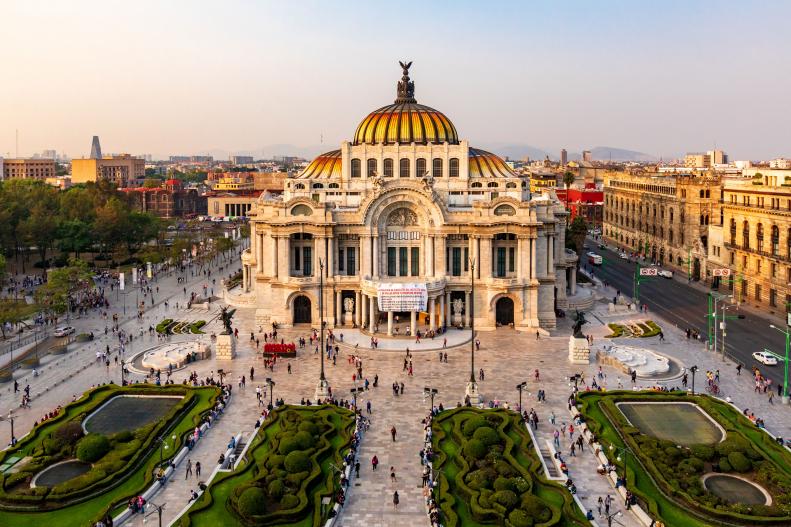Mexico City's Palace of Fine Arts
Traveling to Mexico City feels more like visiting a cosmopolitan, culture-rich European city (with no jet lag, and a blissfully short 3-hour travel time from my home base in Atlanta) than like the tourist-centric resorts Mexico is more often known for. Gay couples openly hold hands on the street, fashionable types in black leather and sky-high heels duck into trendy shops and restaurants; luxury chains and car dealerships dot the chic Polanco and hipster-thick Condesa neighborhoods and an incredible array of street art and sculpture demonstrate locals’ high regard for weaving art into daily life.
Speaking of the arts, the gorgeous Mexico City Palace of Fine Arts (Palacio de Bellas Artes), shown here, is the city's premier cultural center and houses a collection of art and plays host to a number of cultural events. Its stunning gold-domed exterior incorporates art deco and art nouveau styles.









